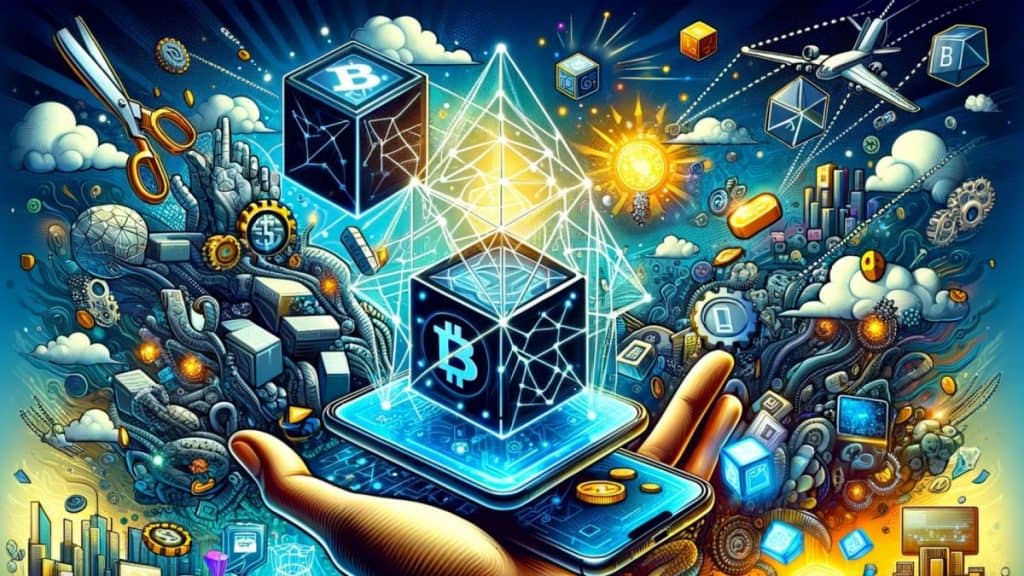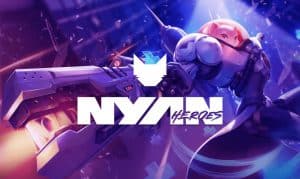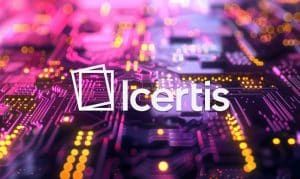Web3 and Mobile Gaming: A Revolutionary Fusion Reshaping the Game Industry


In Brief
The rise of Web3 mobile games has been instrumental in propelling blockchain into mainstream adoption, triggering changes in gaming dynamics and ownership structures.

The rise of Web3 mobile games is instrumental in propelling blockchain into mainstream adoption, triggering changes in gaming dynamics, monetization strategies, and ownership structures.
As people do in-game purchases, it changes how games make money, signaling a new era Web3 brings new ways to buy, play globally, and truly own digital stuff in games. Whether greeted with enthusiasm or met with skepticism, the imminent integration of blockchain into mobile gaming is not just a possibility; it’s a reality that promises to redefine the gaming landscape.
Recent figures and trends underscore the undeniable ascendancy of mobile gaming, commanding a remarkable $92.2 billion of the $184.4 billion global gaming market valuation in 2022.
Navigating the Evolving Landscape of Web3 Mobile Gaming
Mobile gaming’s meteoric rise to dominance is evident in the industry’s exponential growth trajectory.
In 2022, mobile gaming emerged as the primary revenue driver, capturing half of the global gaming revenues. Its appeal lies in the convenience of gaming anywhere, anytime — offering immersive experiences tailored for brief yet meaningful sessions.
The initial skepticism surrounding Web3 gaming, criticized for being boring, costly and cumbersome, has seen a transformative shift.
While past criticisms were valid —- recent breakthroughs, including embedded wallets, zero gas blockchains and instant block times, have propelled over 35 Web3 games to host more than 5,000 active players daily. This integration of blockchain into gaming is becoming more foundational, erasing the distinction between conventional and blockchain gaming.
Now, it’s not just getting things in the game; it’s also about owning digital collectibles in Web3. And as digital economies within games mature, the transition from simple microtransactions to essential Web3-based transactions will become eminent.
Blockchain’s Impact on Marketplace Dynamics in Gaming
Blockchain’s capabilities are the core of this development, opening up new possibilities for transactions and marketplace activity. Modern blockchain technology, featuring gas-free transactions and programmable money via smart contracts, seamlessly integrates microtransactions into gameplay.
This innovation allows games to have a storefront in any NFT marketplace, offering greater flexibility to players and developers.
The introduction of in-game NFTs ensures players truly own assets, fostering a sense of ownership and liquidity. In games such as Axe Infinity players in Web3 games have genuine ownership of their in-game assets, allowing them to trade or sell them on NFT marketplaces. This profound shift incentivizes players to further engage in in-game economies, knowing their assets hold tangible value beyond the virtual realm.
At the crossroads of technology, innovation, and gaming enthusiasm, it’s important to understand that the upcoming blend of Web3 and mobile gaming isn’t just a temporary trend — it signals the beginning of a groundbreaking era.
The integration of Web3, offering genuine digital asset ownership and decentralized economies, isn’t merely an industry adaptation; it represents a redefinition of gaming’s essence. While individual sentiments among gamers may vary, the industry’s trajectory toward a Web3-based future seems firmly established.
Disclaimer
In line with the Trust Project guidelines, please note that the information provided on this page is not intended to be and should not be interpreted as legal, tax, investment, financial, or any other form of advice. It is important to only invest what you can afford to lose and to seek independent financial advice if you have any doubts. For further information, we suggest referring to the terms and conditions as well as the help and support pages provided by the issuer or advertiser. MetaversePost is committed to accurate, unbiased reporting, but market conditions are subject to change without notice.
About The Author
Anya is a seasoned IT writer with a passion for exploring cutting-edge topics in the tech industry, including generative AI, Web3 gamification, and large language models (LLMs). Holding a degree in interpretation, she possesses a unique blend of linguistic expertise and technical acumen. Her inquiring mind and extensive experience allow her to navigate the ever-evolving landscape of technological innovation. Anya is dedicated to uncovering insights and trends across diverse language segments of the Internet, bringing a visionary perspective to her work. Through her articles, she aims to bridge the gap between complex IT concepts and a global audience, making technology accessible and engaging for readers worldwide.
More articles

Anya is a seasoned IT writer with a passion for exploring cutting-edge topics in the tech industry, including generative AI, Web3 gamification, and large language models (LLMs). Holding a degree in interpretation, she possesses a unique blend of linguistic expertise and technical acumen. Her inquiring mind and extensive experience allow her to navigate the ever-evolving landscape of technological innovation. Anya is dedicated to uncovering insights and trends across diverse language segments of the Internet, bringing a visionary perspective to her work. Through her articles, she aims to bridge the gap between complex IT concepts and a global audience, making technology accessible and engaging for readers worldwide.






















































